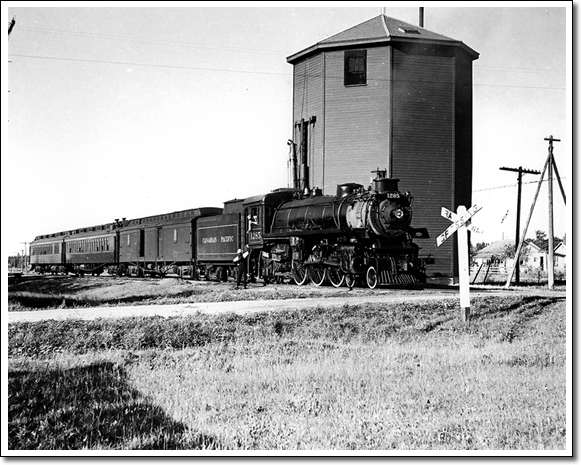Manitoba Heritage Council Commemorative Plaques
Clearwater Canadian Pacific Railway Water Tower
Eleventh Street
Clearwater
Designation Date: September 26, 1996
Designation Authority: Honourable Harold Gilleshammer, Minister of Culture, Heritage and Citizenship
Present Owner: Louise (R.M.)
This octagonal wooden railway tower is a rare vestige from the age of the steam-powered locomotive. The new design, the Standard No. 1 Plan, was pioneered by the Canadian Pacific Railway (CPR) in 1903, to replace the low, round, wooden water tower in use since 1882. It quickly became part of the Manitoba landscape, with 75 water towers constructed from 1904 to 1925. Towers, pump houses, coal sheds, and sidings were constructed approximately every 80 kilometres (50 miles), the distance a steam locomotive could safely travel between water refills.
The Clearwater tower, constructed in 1910, stands within 91 metres (100 yards) of what became known as the Boundary Commission Trail, a route first used by Aboriginal peoples, early explorers, fur traders and buffalo hunters. Clearwater is the only town along the Trail still on its original site.
The Clearwater structure is a good example of a fully operational water tower. The slightly modified interior contains a steel water tank encased in cedar, with a capacity of 181,840 litres (40,000 gallons) of water. A coal-burning boiler powered an interior water pump and prevented the water in the tank from freezing. A ball or “float” glides along a pole atop the tower to indicate the level of the water in the tank.
By the late 1950s, the railway companies converted to diesel-powered locomotives, which made the water towers obsolete. This tower serves as the water supply for the community of Clearwater and area residents.



